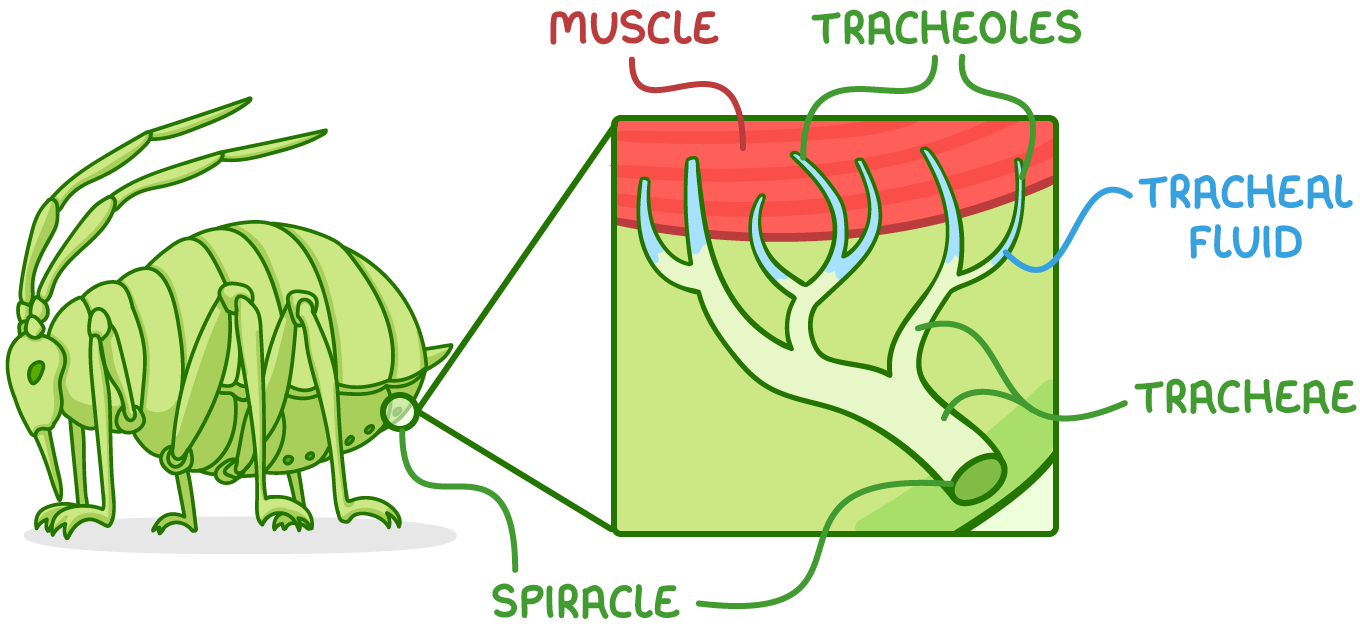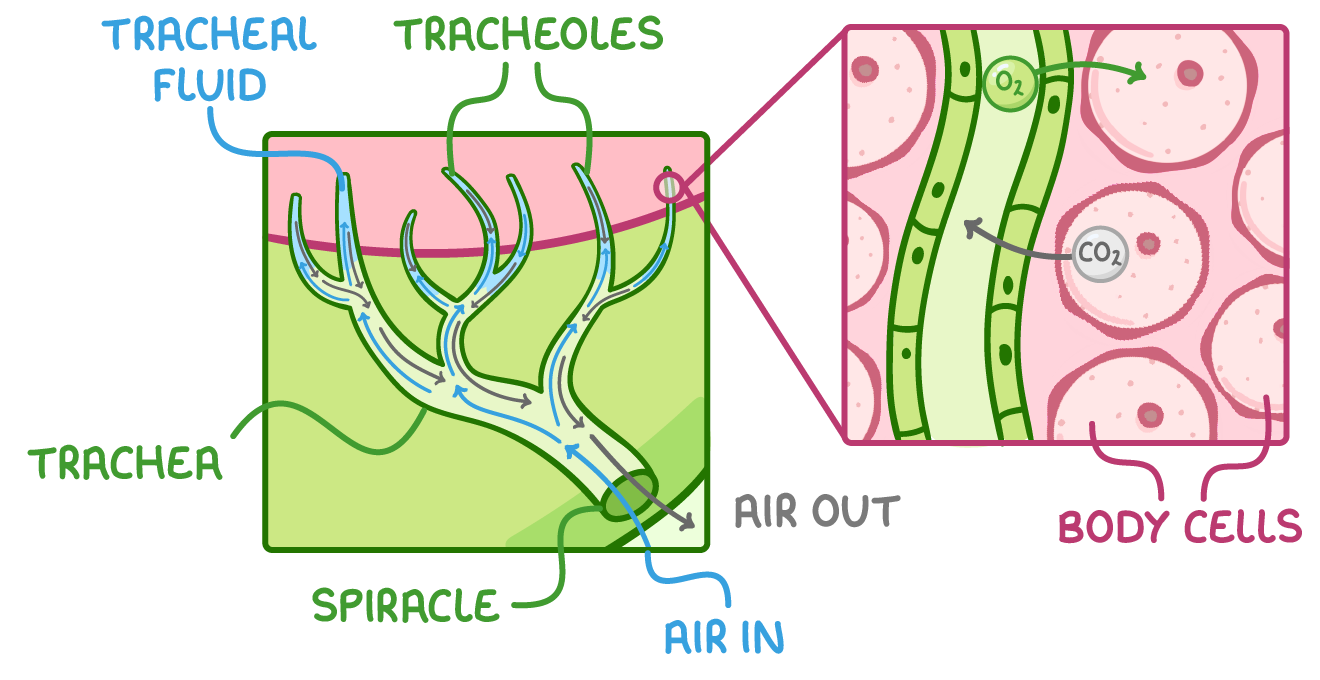Gas Exchange in Insects
This lesson covers:
- Why insects need gas exchange systems
- Structural and functional compromises in insect gas exchange
- The structures involved in insect gas exchange
- How gas exchange occurs in insects
- Additional ventilation mechanisms in insects
Why insects need gas exchange Insects have high oxygen demands but their tough chitinous external skeleton (exoskeleton) prevents direct gas exchange. Insects need efficient systems for exchanging gases for two main reasons:
|
Insect gas exchange systems have adapted to balance two conflicting needs:
The exoskeleton is covered with a waterproof cuticle to help prevent water loss, but the insect gas exchange system itself has additional methods to prevent excess water loss while still being effective at gas exchange. |
Structures of the insect gas exchange system Insects have an open respiratory system comprised of tubular structures that transport air.  The main structures involved are:
|
Adaptations of the structures in the insect gas exchange system There are some key features that make these structures well adapted for their functions. Tracheae:
Tracheoles:
Spiracles:
|
How gas exchange occurs There are several key stages to gas exchange in insects.  These stages are:
|
The concentration gradients between the tissues and air in the tracheal system are maintained by:
|
Other ventilation mechanisms Some insects, particularly active ones, may use additional ventilation mechanisms to drive air through the tracheal system. Some of these mechanisms include:
|